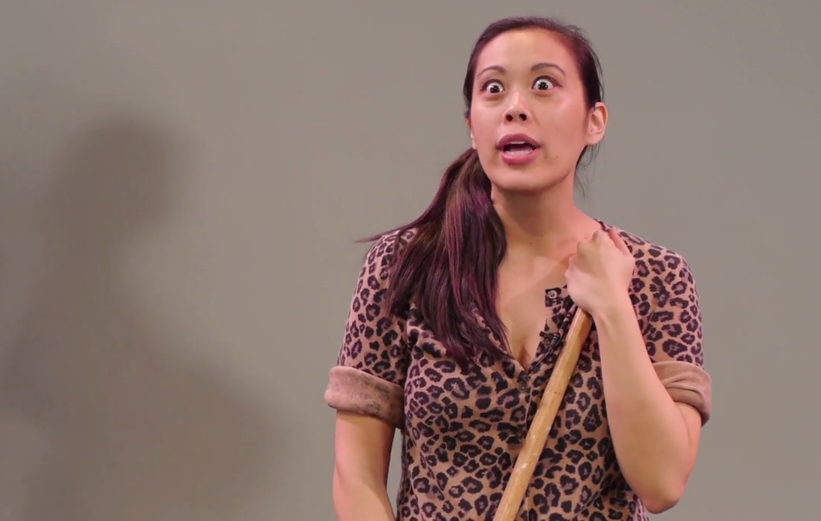Hello! Over here!
An actor doesn’t necessarily need to be upstage when upstaging another performer. When one actor takes attention away from another, that’s called upstaging, even if it happens downstage. Of course, upstaging tends to be easier from the upstage position: When an actor steals focus in the background by flailing about and being over the top, all eyes go to him—even his fellow actors’, so they’re forced to physically turn their backs on the audience. However, an actor who chews the scenery or overacts on any part of the stage is often accused of upstaging.
Interestingly, the worst case of upstaging I’ve ever seen didn’t come from an actor—it was a staircase. Every time designer John Napier’s grand set of stairs descended in the Broadway musical Sunset Boulevard, you couldn’t look at anything else. Like the chandelier in The Phantom of the Opera or the helicopter in Miss Saigon, the set piece upstaged the humans.
In theatre, upstaging is generally considered a criticism, not to mention bad form. However, in other areas, especially sports, it’s used as a compliment. When one player upstages another it means he outshone his competition and triumphed. Isn’t it nice that theatre is a collaborative art instead of a contest?
—Raven Snook
This video was created by TDF and New York Neo-Futurists.

